Giusewa
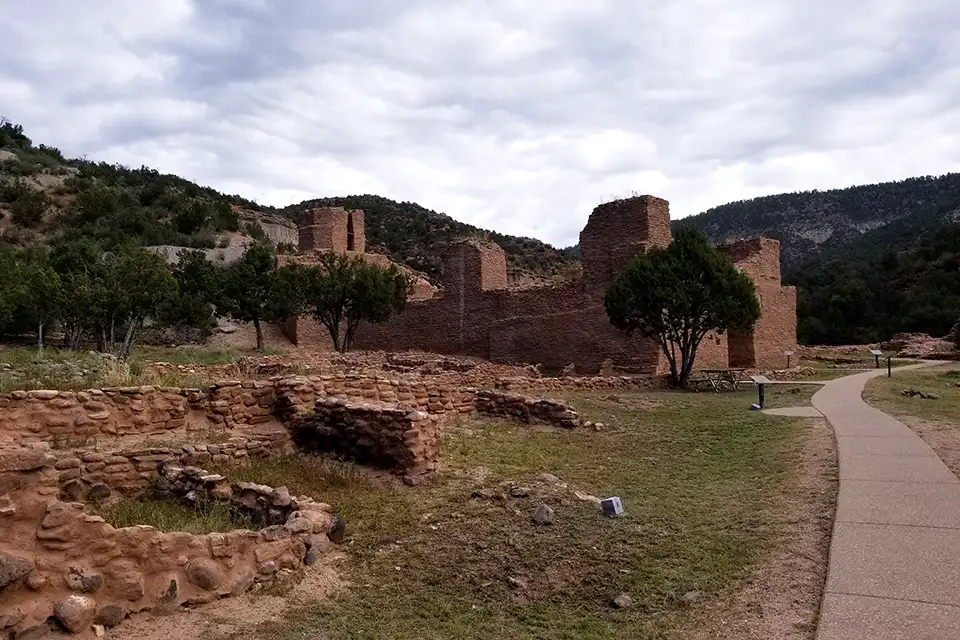
The remains of Giusewa
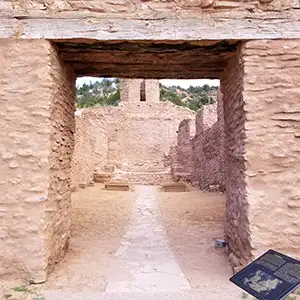
Entryway to San Jose de Los Jemez Mission
Giusewa was a village in the Jemez Mountains, built alongside what is now the Jemez River. The word Giusewa means hot springs and the hot springs are located just a few yards away.
Construction of the pueblo began sometime around 1560 and reached a peak in 1621 when the Spanish Franciscan fathers forced the people to stop everything else and build the San Jose de Los Jemez mission. The mission was finished in 1623 but then there were more things that just had to be built for the good fathers... to the detriment of the people.
The people pushed back every step of the way until the 1680 Pueblo Revolt took place. The Towa took out every Spanish person in their neighborhood and then a large mass of warriors headed for Santa Fe to get rid of the rest.
They succeeded in doing that, for 12 years, but the hated Spanish came back in force in 1692. Don Diego de Vargas traveled around visiting every pueblo he could find to swear them to allegiance with the King of Spain and the Catholic Church.
Giusewa had been completely abandoned by then, some of the people moving up the hill and deeper into the forest with others moving south into the canyon where Walatowa is today.
At its height, Giusewa had about 200 rooms in 5 blocks. There were also 2 kivas. Portions of the pueblo have been reconstructed. The most imposing structure still standing is the mission church. Built of limestone, sandstone, volcanic tuff and mud plaster, the walls of the mission are between 6 and 7 feet thick. Portions of it have been stabilized to limit erosion. Nearby is another large structure, probably built to house the priest when he came to visit.
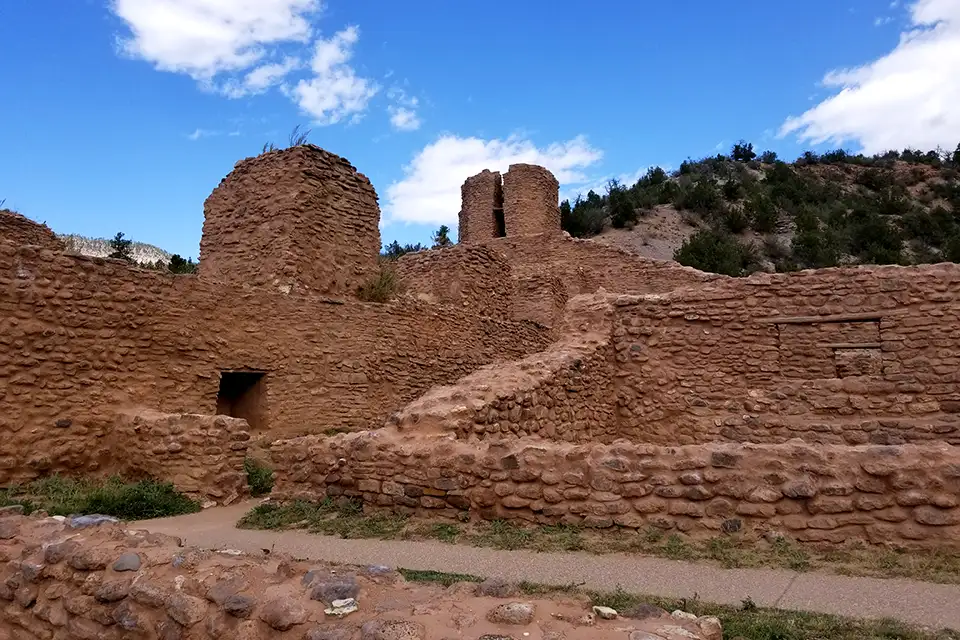
More of what remains of Giusewa
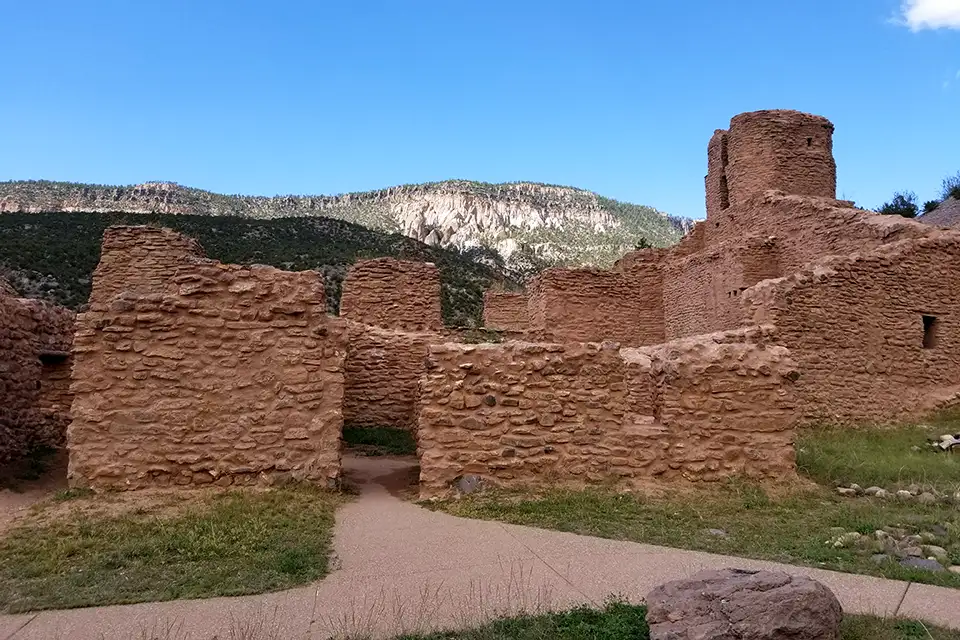
More of what remains of Giusewa
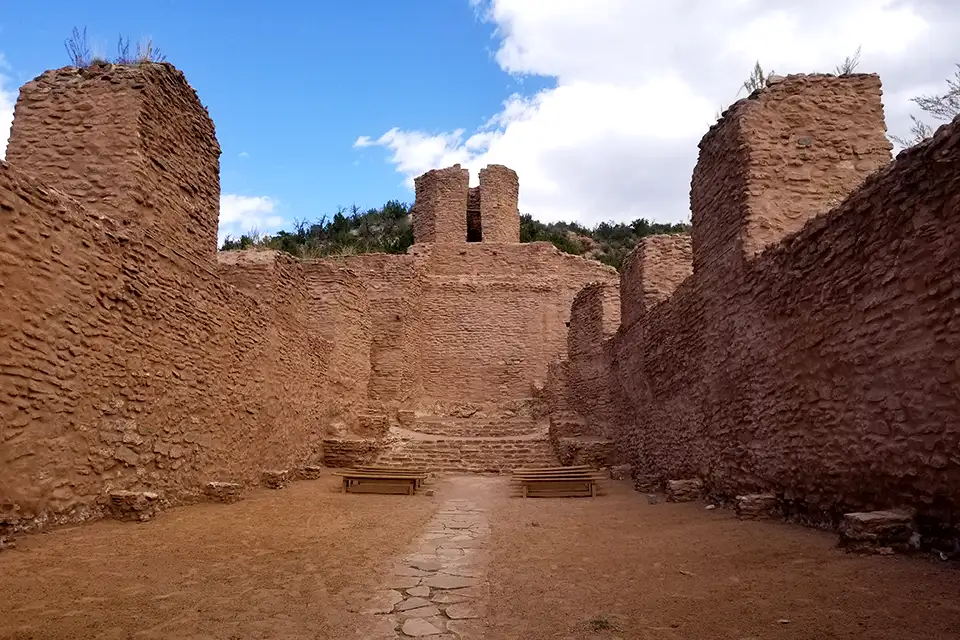
Inside the walls of the San Jose de Los Jemez Mission
Sites of the Ancients and approximate dates of occupation:
Atsinna : 1275-1350
Awat'ovi : 1200-1701
Aztec : 1100-1275
Bandelier : 1200-1500
Betatakin : 1275-1300
Casa Malpais : 1260-1420
Chaco Canyon : 850-1145
Fourmile Ranch : 1276-1450
Giusewa : 1560-1680
Hawikuh : 1400-1680
Homol'ovi : 1100-1400
Hovenweep : 50-1350
Jeddito : 800-1700
Kawaika'a : 1375-1580
Kuaua : 325-1580
Mesa Verde : 600-1275
Montezuma Castle : 1200-1400
Payupki : 1680-1745
Poshuouingeh : 1375-1500
Pottery Mound : 1320-1550
Puyé : 1200-1580
Snaketown : 300 BCE-1050
Tonto Basin : 700-1450
Tuzigoot : 1125-1400
Wupatki/Wukoki : 500-1225
Wupatupqa : 1100-1250
Yucca House : 1100-1275